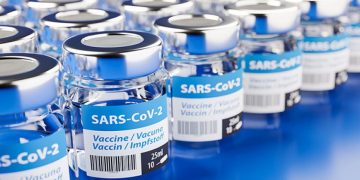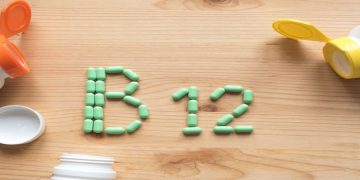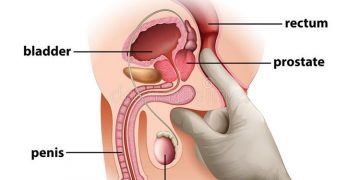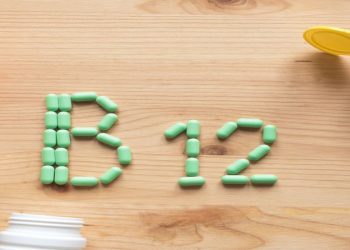All antibodies work via preparing the invulnerable framework to react to future contamination. Antibodies are predominantly ok for most of the individuals who get them, and they don’t cause infection.
There are 12 antibodies against COVID-19 that have approval for use in different areas all throughout the planet.
Immunization engineers worked under remarkable conditions to foster antibodies against COVID-19 after the development of the SARS-CoV-2 infection in late 2019. It took not exactly a year for the main COVID-19 antibodies to acquire approval for use.
While this is essentially quicker than for any remaining antibodies, designers utilized existing immunization innovation and a coordinated worldwide exertion — working close by wellbeing specialists like the Food and Drug Administration (FDA) — to work going on like this.
In this Special Feature, we investigate how unique COVID-19 immunizations work and what researchers mean when they talk about incidental effects and antibody viability.
In particular, we cover:
mRNA immunizations
viral vector immunizations
subunit immunizations
inactivated immunizations
immunization incidental effects
immunization adequacy
Diverse antibody types
Albeit all of the COVID-19 antibodies being used all throughout the planet mean to accomplish a similar objective — in particular, insurance from COVID-19 — they utilize diverse immunization innovations.
A few immunizations depend in general SARS-CoV-2 infection, others utilize just pieces of it, and some don’t utilize any material got straightforwardly from the infection.
The areas beneath give an outline of the various sorts of COVID-19 antibodies that have approval for use in no less than one country.
mRNA antibodies
The COVID-19 mRNA antibodies that BioNTech-Pfizer and Moderna created are the first mRNA immunizations approved for use in quite a while outside of clinical preliminaries. Notwithstanding, the innovation isn’t new.
Researchers have been dealing with mRNA antibody contenders for irresistible illnesses and malignant growth for various years.
mRNA immunizations don’t contain any piece of the SARS-CoV-2 infection. All things considered, they convey an artificially combined piece of courier (m)RNA that contains the data important for our own cells to make the SARS-CoV-2 spike protein.
Our cells make this protein and present it to our resistant framework, which reacts by making antibodies and growing longer enduring invulnerability as T cell and B cell reactions.
It is absurd to expect to foster COVID-19 from an mRNA antibody since it doesn’t convey the guidelines important to make the whole Covid.
Viral vector immunizations
Like mRNA immunizations, viral vector antibodies additionally don’t contain the entire SARS-CoV-2 infection. They utilize an innocuous infection to convey the quality that permits our cells to make the spike protein.
The Oxford-AstraZeneca, Sputnik V, and Johnson and Johnson COVID-19 immunizations are largely popular vector antibodies that utilization diverse adenoviruses as the conveyance framework, or vector. Adenoviruses can cause a normal cold, and there are various kinds of adenoviruses that can taint various species.
The Oxford-AstraZeneca immunization utilizes a chimpanzee adenovirus vector called ChAdOx1. The Russian Sputnik V immunization utilizes two unique human adenovirus vectors called Ad26 and Ad5. Johnson and Johnson likewise utilize the Ad26 infection in their antibody.
Each of the three antibodies contains the quality of the spike protein and conveys this into cells after infusion. The cells then, at that point, make the spike protein and present it to our insusceptible framework.
Likewise, with mRNA antibodies, viral vector immunizations don’t convey the data fundamental for our cells to make the whole SARS-CoV-2 infection. Along these lines, they can’t cause COVID-19.
Subunit immunizations
Like mRNA and viral vector antibodies, subunit immunizations just utilize a piece of the SARS-CoV-2 infection. Be that as it may, as opposed to furnishing our cells with the hereditary code important to make a viral protein, subunit antibodies convey the protein straightforwardly.
The Novavax COVID-19 antibody up-and-comer is a subunit immunization. Researchers created a lot of the SARS-CoV-2 spike protein in a lab for this trial immunization. Novavax uses bug cells to develop the proteins prior to purging them. The purged proteins then, at that point, structure nanoparticles.
All alone, the protein nanoparticles may not deliver a sufficient safe response, so Novavax adds an adjuvant. This is a compound that animates the invulnerable framework.
Subunit immunizations don’t convey sufficient viral material to make the entire SARS-CoV-2 infection. Thusly, they can’t cause COVID-19.
Inactivated antibodies
In contrast to mRNA, viral vector, and subunit immunizations, inactivated antibodies contain the whole SARS-CoV-2 infection. Notwithstanding, the infection is synthetically adjusted to inactivate it, which implies that it can’t cause sickness.
Sinovac, Sinopharm, and Bharat Biotech all utilize a compound called beta-propiolactone to inactivate the SARS-CoV-2 infection in their antibodies. The substance adjusts the infection’s hereditary material.
Inactivated COVID-19 antibodies can’t cause COVID-19, as the infection can’t make duplicates of itself.
This kind of antibody doesn’t deliver as solid a safe response as some others, and the subsequent insusceptibility may not be as dependable. Sinovac, Sinopharm, and Bharat Biotech use adjuvants in their COVID-19 antibodies to create a more grounded insusceptible reaction.
To give invulnerability over the long haul, it very well might be important to get promoter shots subsequent to getting an inactivated COVID-19 antibody.
Incidental effects and viability
All trial immunizations go through thorough testing in preclinical examinations and clinical preliminaries. These are intended to evaluate the security of the antibody and how well it charges at forestalling sickness.
Researchers measure the security of an immunization applicant by checking incidental effects in the preliminary members.
By checking out the number of individuals who foster incidental effects in the gathering who had a test antibody and contrasting this and the incidental effects in the gathering who had the fake treatment, they can decide how safe an immunization applicant is.
This likewise permits them to accumulate information on the probability that individuals getting the immunization will encounter incidental effects.
For instance, 84.7%Trusted Source of individuals who got the Pfizer-BioNTech COVID-19 immunization during clinical preliminaries detailed somewhere around one incidental effect at the infusion site.
The most well-known incidental effect was tormented, in which 83.1% of members matured 18–55 years and 71.1% of those matured 55 years or more announced.
In a clinical preliminary, researchers likewise work out how well exploratory antibody functions. They do this by contrasting the number of individuals in the treatment bunch foster the sickness with the number of individuals in the fake treatment bunch foster the illness.
This is called antibody viability, and it depicts the rate decrease in infection in the clinical preliminary.
Specialists have revealed adequacy of 94.1% for the Moderna COVID-19 immunization.
Be that as it may, immunization viability is unique in relation to antibody adequacy. Antibody viability alludes to how well immunization functions, in actuality, settings (outside of clinical preliminaries). Researchers will keep on concentrating on how viable COVID-19 immunizations are in local area settings, however, it will take some time before powerful information is accessible.
Early reports from Israel show that the pace of new COVID-19 cases among medical care laborers who got the Pfizer-BioNTech immunization was 85%Trusted Source lower at 15–28 days after the principal infusion.
This gives us an early sign of how well the immunization functions in reality.
























































Discussion about this post